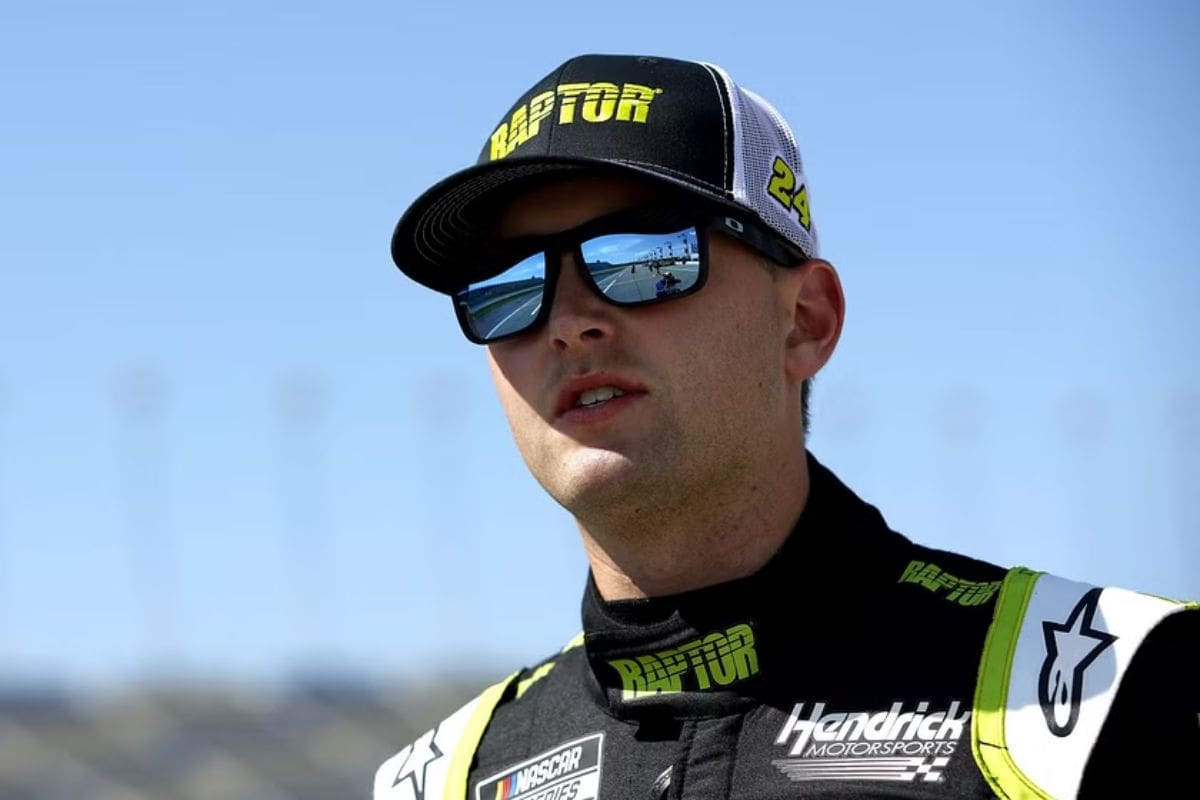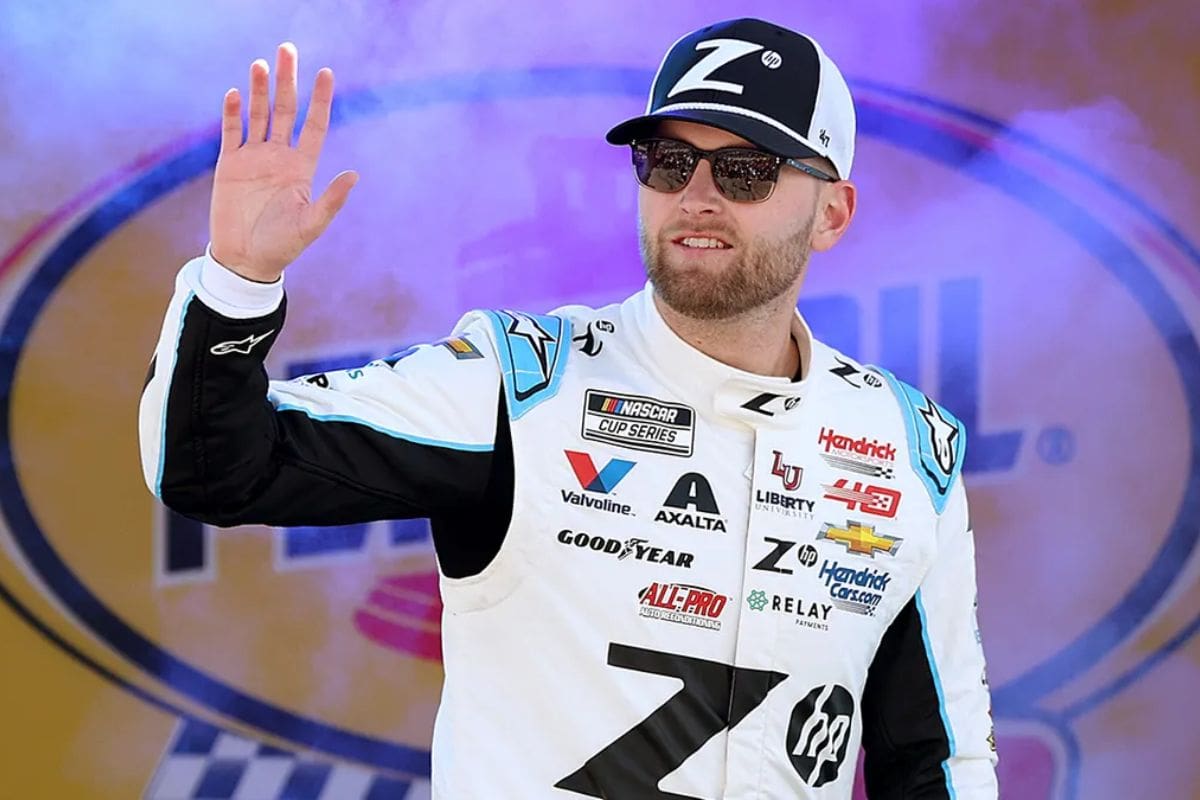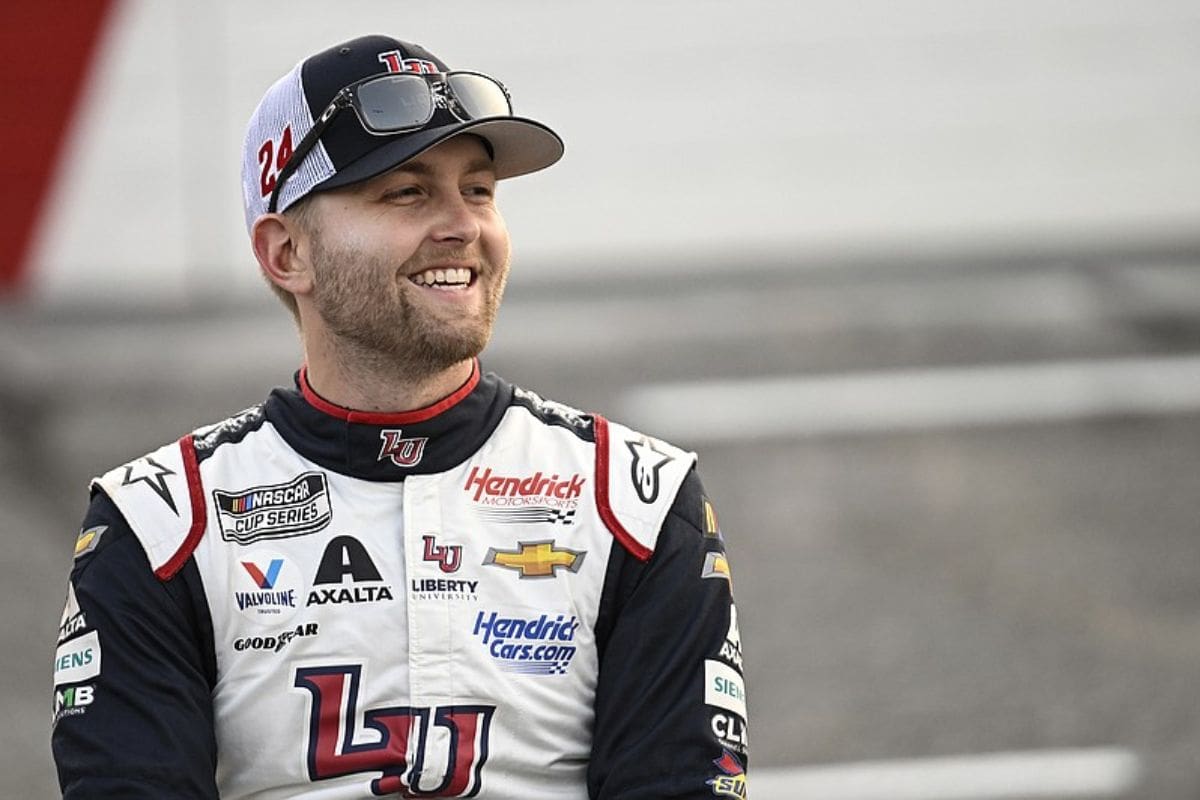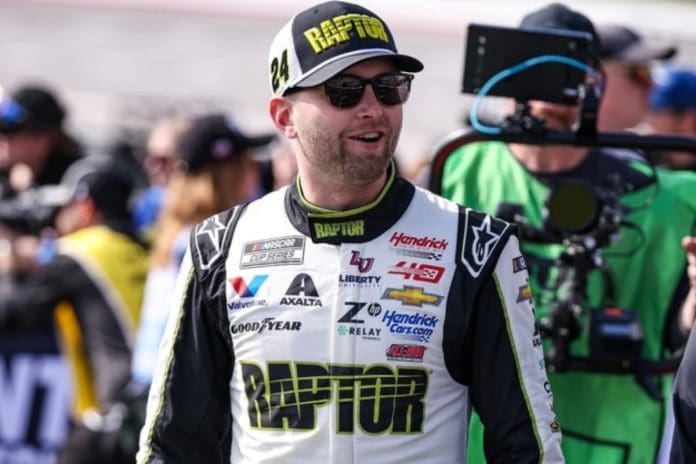William Byron Breaks Silence: William Byron, a notable figure in NASCAR, recently articulated his endorsement for the sport’s current approach to scheduling, particularly emphasizing the strategic incorporation of road courses. He argues that these tracks offer a vital dimension of technical challenge and strategic depth, enriching the competitive landscape. Byron says it’s really important to have a balanced schedule. He warns that focusing too much on just one kind of track can be a problem. His demand for diversity in racing formats—supported by personal triumphs at road courses—shows a broader vision for NASCAR that respects its heritage while adapting to contemporary demands. Insights into how this balance benefits the sport further underline the evolving nature of racing.
Key Takeaways
- William Byron supports the balanced inclusion of road courses in the NASCAR schedule.
- He emphasizes the importance of maintaining NASCAR’s heritage while adapting to contemporary demands.
- Byron highlights the strategic and technical challenges introduced by road courses.
- He warns against the filling of any one type of track in the NASCAR lineup.
- Byron’s success on road courses underscores his advocacy for schedule diversity.
William Byron Supports Current NASCAR Schedule Balance
William Byron, a prominent figure in the NASCAR world, recently voiced his approval of the meticulous balance achieved in the current racing schedule, emphasizing the strategic inclusion of road course events. Speaking from the Richmond Raceway, the Hendrick Motorsports driver articulated a well-considered viewpoint that carries weight within the racing community, given his experience and success on the track. Byron’s endorsement of the schedule’s composition is not just a matter of personal preference but reflects a broader understanding of the sport’s evolution and its audience’s expectations.
Analyzing Byron’s comments, it’s clear that his approval stems from an appreciation of the diversity road courses bring to NASCAR. These races, known for their technical demands and strategic complexity, offer a contrast to the oval tracks that dominate the calendar. They test drivers in different ways, demanding adaptability and a distinct approach to racing. This variety, according to Byron, enriches the championship and enhances the competitive landscape, making the season more engaging for fans and drivers.
Moreover, Byron’s stance highlights the importance of balance in maintaining the sport’s integrity and appeal. By carefully selecting the number and type of events, NASCAR can ensure that the championship remains a thorough test of driving skill and team strategy. This equilibrium between different racing formats is vital in keeping the sport dynamic and unpredictable, elements that are key to sustaining interest and excitement among its audience. In advocating for the current schedule, Byron shows the significance of thoughtful planning in preserving NASCAR’s unique character and appeal.

Byron’s Preference for Balance Over Oversaturation
Building on his endorsement of the NASCAR schedule’s composition, Byron also emphasizes the need for a balanced approach, cautioning against the oversaturation of road course races in the calendar. His perspective sheds light on a distinct understanding of the sport’s evolutionary trajectory, where the recent increase in road course events has sparked a dialogue about the ideal composition of the racing calendar. Byron, acknowledging the shift, shows the imperative for drivers to enhance their prowess in road course racing, yet he demands for a schedule that does not disproportionately favor one type of track over another.
This stance speaks to a broader concern within the racing community about maintaining the sport’s diversity and appeal. NASCAR, historically celebrated for its variety in track configurations—ranging from short tracks to superspeedways and road courses—faces a critical balancing act. Byron’s insights suggest that an equilibrium must be found, one that respects the sport’s heritage while adapting to contemporary demands for more road course action. His caution against an overemphasis on road courses reflects a thoughtful consideration for the sport’s identity and the skills it demands of its competitors.
The intricacies of this debate reveal that the path forward is not merely about adding more of one type of race but about crafting a schedule that challenges drivers, delights fans, and honors NASCAR’s rich tapestry of racing formats. Byron’s call for balance, therefore, is not just a personal preference but a strategic vision for preserving the multifaceted nature of motorsports competition.
“Yeah I like the balance of what it is right now. I think we can’t really oversaturate. I like that we have four or five road courses. When we started to go to five or six, I knew that I had to become a better road course racer. Always had speed on road courses, but it became a big priority. So I don’t know, I like the traditional tracks that we go to. And I think our schedule is fine the way it is. I think this year’s probably the most traditional.” “It’s been with having so many short tracks in a row and we’re kind of back to the roots there. So, I don’t know, I’m going to race wherever they tell me to go. But, I think it’s a good balance right now,” -(Byron)
Recent Success at Road Courses Fuels Byron’s Support
The recent triumphs of William Byron on road courses, particularly his commanding victory at the Circuit of The Americas (COTA), show his growing prowess and bolster his advocacy for a balanced NASCAR schedule. Byron’s success isn’t merely a reflection of his driving skill but also highlights the distinct strategy and adaptability required to excel on such diverse tracks. With two road course wins in the last three events, except for finishing in second place at the Charlotte Motor Speedway road course. Byron’s affinity for these challenging venues is unmistakable, setting an example for performance that not only enriches his career but also serves as a benchmark in the ongoing discourse about the NASCAR schedule.
Analyzing Byron’s performance, one can discern a pattern of meticulous preparation and execution. Road courses, with their intricate turns and elevation changes, demand a level of precision and adaptability that Byron has mastered. His dominant display at COTA, a track that tests a driver’s skill in both speed and strategy, illustrates his capability to excel under varying conditions. This adaptability not only enhances his standing as a versatile driver but also strengthens his position in advocating for a schedule that embraces the diversity of tracks.
Furthermore, Byron’s recent achievements on road courses serve as a critical data point in the broader discussion about the future direction of NASCAR. His success shows the potential for road courses to contribute significantly to the sport’s appeal and competitiveness. It’s a compelling argument for a balanced approach to scheduling, ensuring that the diversity of tracks reflects the evolving landscape of motorsports and the varied skill sets of its drivers.

Growing Significance of Road Courses in NASCAR
Recognizing the evolving landscape of NASCAR, the strategic incorporation of road courses into the playoffs and the reintroduction of stage breaks at street courses show their escalating significance within the sport. This deliberate shift not only diversifies the drivers’ skill sets required for success but also enhances the spectator experience by introducing more dynamic and unpredictable racing scenarios. Although road and street courses constitute a minor portion of the regular-season schedule, their influence is disproportionately significant in the playoffs, reflecting NASCAR’s acknowledgment of their value in determining the most versatile and skilled champion.
The growing prominence of road courses in NASCAR is a calculated response to calls for greater variety and complexity in the racing calendar. This move away from an oval-centric format to include more technical tracks challenges drivers and teams to excel across a broader spectrum of racing disciplines. It also aligns with a broader trend in motorsports towards more diverse and engaging race formats, catering to a sophisticated audience that appreciates the variations of different racing styles.
Moreover, the reintroduction of stage breaks at street courses is a strategic decision aimed at enhancing competition and viewer engagement. These breaks not only create natural points of excitement and strategy adjustments but also show the importance of every segment of the race in the broader context of season standings and playoff qualifications. This distinct approach to race formatting and scheduling demonstrates NASCAR’s commitment to evolving with its fan base while preserving the core elements of racing competition and strategy that have long defined the sport.
Exciting Calendar Highlights Street Courses’ Impact
In a recent turn of events, it’s becoming crystal clear that road and street courses are punching above their weight in NASCAR’s playoff scene. Despite making up just 11.5% of the regular-season lineup, these tricky tracks now constitute a whopping 20% of the playoffs. The EchoPark Automotive Grand Prix at COTA served as the latest reminder of their growing significance. Keep your eyes peeled for four other such nail-biting tracks this season. Among the highlights is the upcoming showdown at Sonoma Raceway. On June 8, the Xfinity Series will grace its asphalt, dubbed the Sonoma 250. This California gem will also play host to the Cup Series’ Toyota/Save Mart 350 on June 9, promising 110 laps of pure adrenaline.
Get ready for the adrenaline rush as NASCAR makes its triumphant return to the iconic Giant Park for the Chicago Street Race on July 7. Locked in for a minimum three-year thrill ride, this epic showdown, known as the Grant Park 200, promises 75 heart-pounding laps of pure racing bliss. Brace yourselves for the ultimate kickoff to the 2024 Cup Series playoffs with the Quaker State 400 Available at Walmart, revving up the engines in Georgia on September 8. And buckle up for a wild ride at Watkins Glen International from September 13 to 15, as it plays host to the Cup Series playoffs.
As NASCAR continues to evolve, the inclusion of street courses represents a strategic effort to broaden its appeal and challenge the status quo, promising a thrilling future for the sport and its fans.

News in Brief
William Byron’s defense of NASCAR’s current track selection underscores the importance of maintaining a balanced schedule that incorporates a diverse array of course types, including road and street circuits.
This stance, fueled by personal success and the growing prominence of such tracks within the series, highlights the evolving nature of NASCAR and its adaptation to varied racing environments.
The inclusion of road courses, in particular, signifies an exciting development in the sport, promising a dynamic and engaging future for competitors and fans alike.
Our Reader’s Queries
Q: Has William Byron ever won a NASCAR race?
A: Entering his seventh season piloting the No. 24 Hendrick Motorsports Chevrolet, William Byron boasts 12 career victories. His latest triumph occurred in March 2024 at the EchoPark Automotive Grand Prix, held at Circuit of The Americas.
Q: Who is William Byron’s crew chief in NASCAR?
A: Ryan ‘Rudy’ Fugle, serving as crew chief for the #24 HMS Camaro driven by William Byron since 2021, previously partnered in the 2016 Truck Series season, securing seven wins. Their championship quest was marred by a setback before the Phoenix race.
Q: How did William Byron get into racing?
A: Starting his racing journey on the iRacing simulator as a teenager, Byron amassed over 100 wins and 298 top fives in online competition. Transitioning to real cars in 2012 at 15, he embarked on his offline racing career, beginning with Legends races alongside his father.
Also Read: William Byron’s Secret Persona Exposed: Is He NASCAR’s New Jimmie Johnson?


